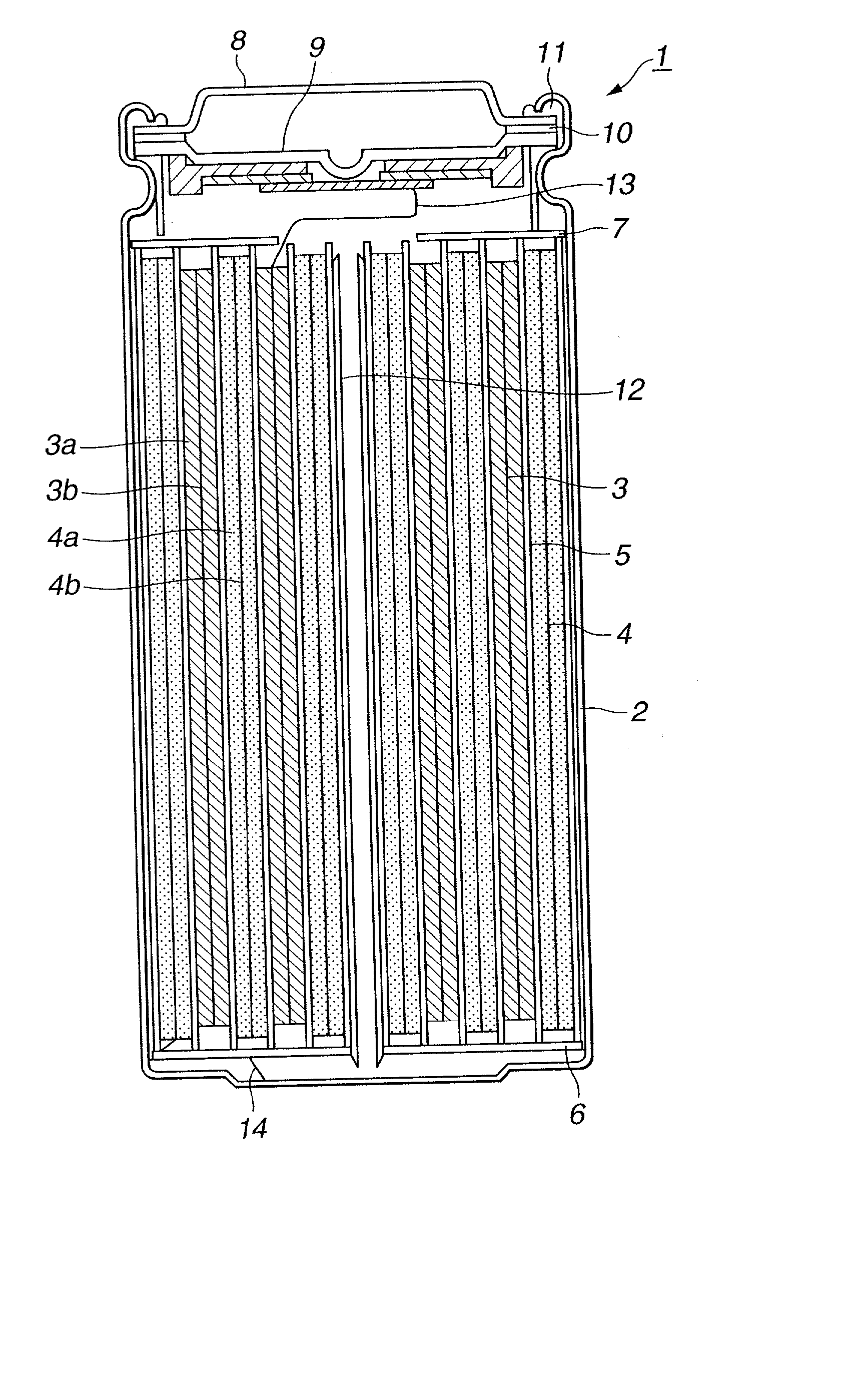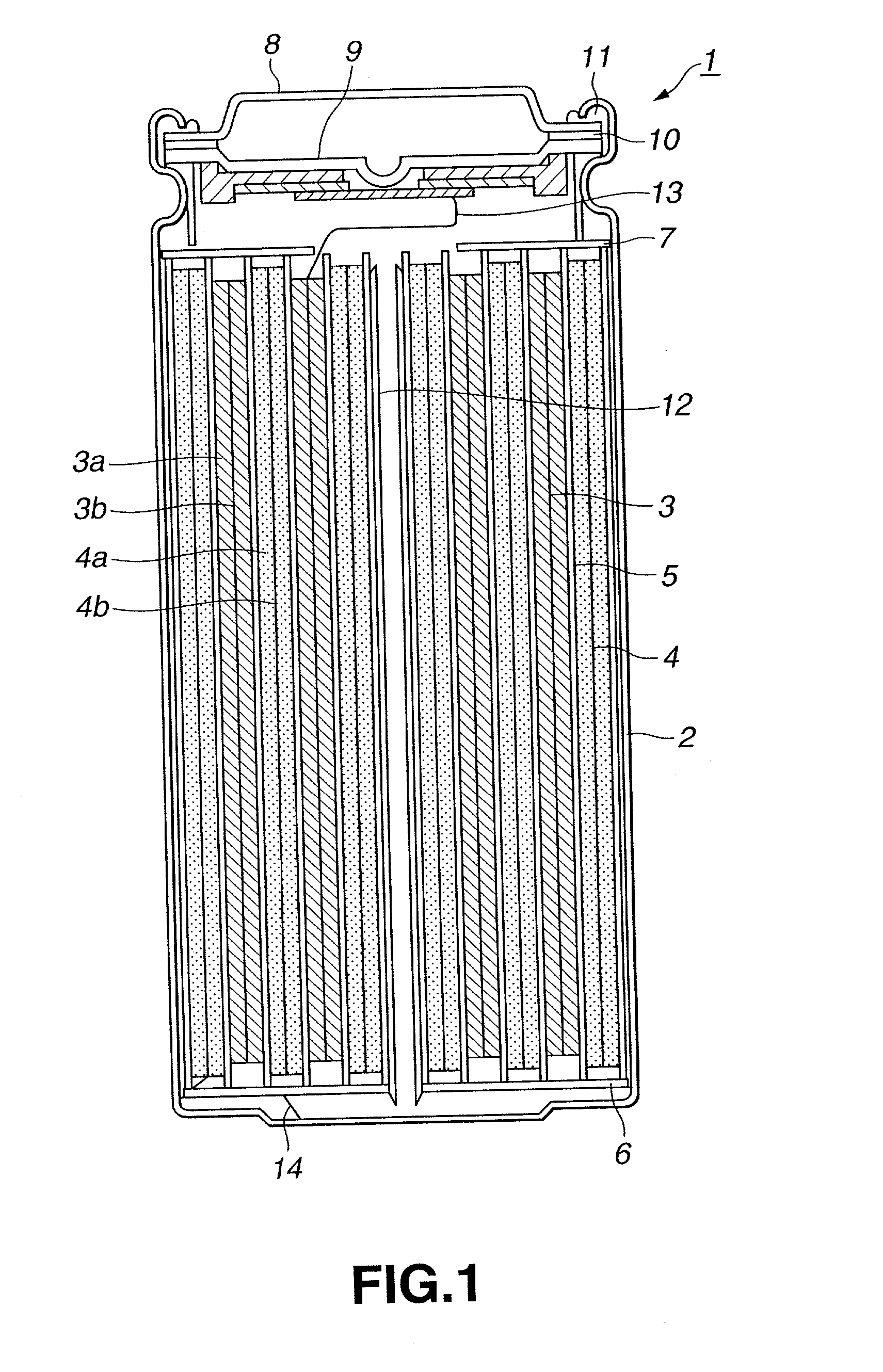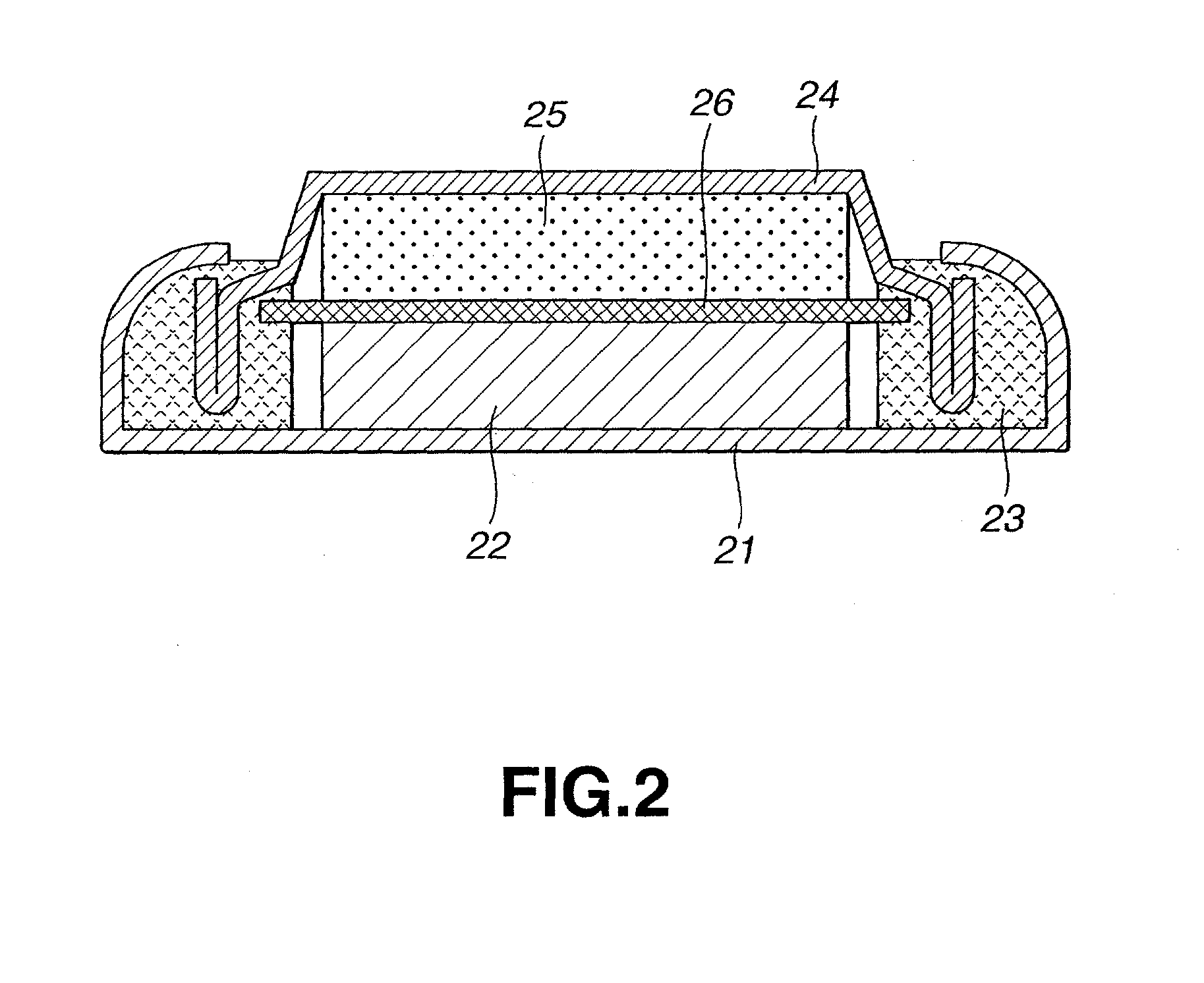Anode active material and nonaqueous electrolyte secondary battery
a nonaqueous electrolyte, secondary battery technology, applied in the direction of batteries, primary cell maintainance/servicing, cell components, etc., can solve the problems of sudden deterioration of the charging and discharging cyclic properties easy deterioration of the charging and discharging cyclic characteristics of the secondary battery, etc., and achieve the above-described secondary battery. practical use difficult to achieve
- Summary
- Abstract
- Description
- Claims
- Application Information
AI Technical Summary
Benefits of technology
Problems solved by technology
Method used
Image
Examples
example 2
[0139] In the Example 2, an anode was manufactured and an evaluating coin type cell was produced in the same manner as that of the Example 1 except that an anode composite mixture was prepared by mixing granulated graphite powder of 60 wt %, fibrous graphite of 30 wt % and PVDF of 10 wt % together.
example 3
[0140] In the Example 3, an anode was manufactured and an evaluating coin type cell was produced in the same manner as that of the Example 1 except that an anode composite mixture was prepared by mixing granulated graphite powder of 89.9 wt %, fibrous graphite of 0.1 wt % and PVDF of 10 wt % together.
example 4
[0141] In the Example 4, an anode was manufactured and an evaluating coin type cell was produced in the same manner as that of the Example 1 except that granulated graphite having the average particle diameter of 25 .mu.m was mixed with fibrous graphite having the average diameter of fiber of 0.1 .mu.m and the average length of fiber of 30 .mu.m to obtain an anode base material, and the anode base material was used to prepare an anode composite mixture by mixing the granulated graphite power of 85 wt %, the fibrous graphite of 5 wt % and PVDF of 10 wt % together.
PUM
| Property | Measurement | Unit |
|---|---|---|
| diameter | aaaaa | aaaaa |
| diameter | aaaaa | aaaaa |
| temperature | aaaaa | aaaaa |
Abstract
Description
Claims
Application Information
 Login to View More
Login to View More - R&D
- Intellectual Property
- Life Sciences
- Materials
- Tech Scout
- Unparalleled Data Quality
- Higher Quality Content
- 60% Fewer Hallucinations
Browse by: Latest US Patents, China's latest patents, Technical Efficacy Thesaurus, Application Domain, Technology Topic, Popular Technical Reports.
© 2025 PatSnap. All rights reserved.Legal|Privacy policy|Modern Slavery Act Transparency Statement|Sitemap|About US| Contact US: help@patsnap.com



